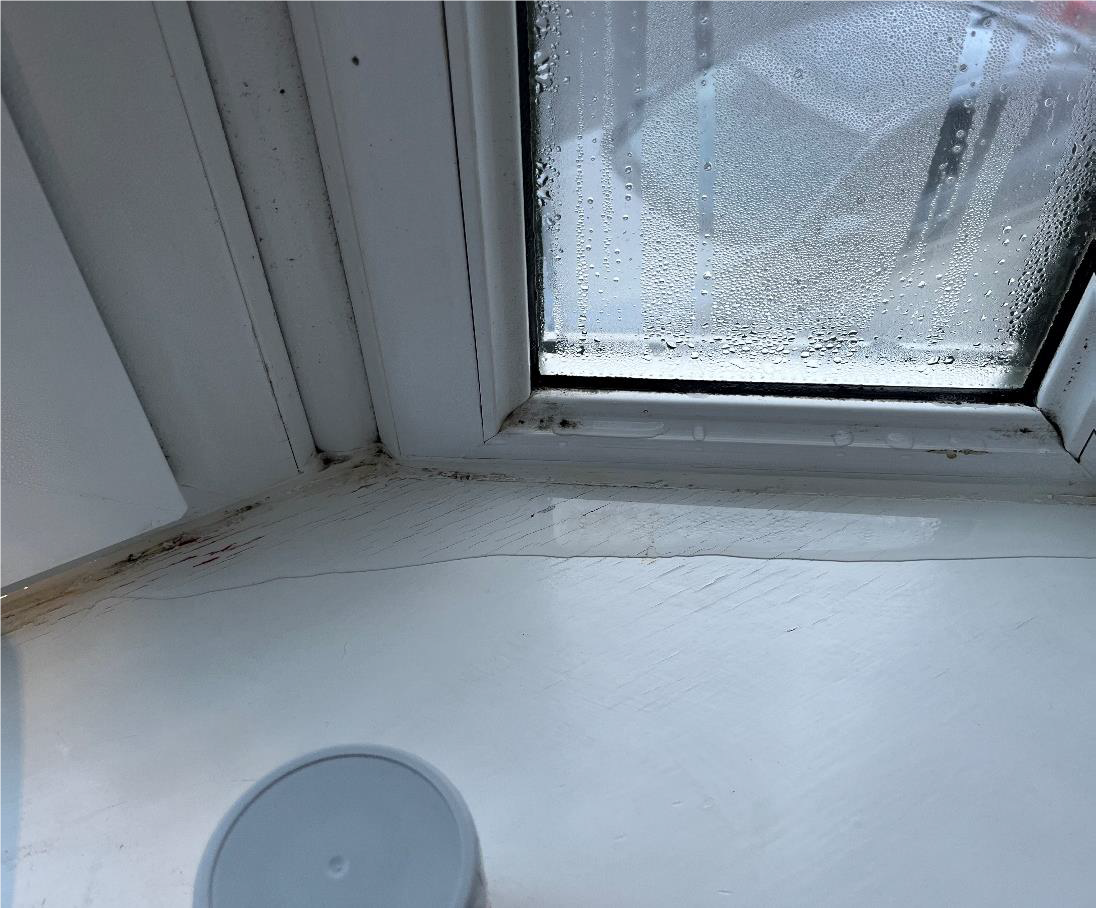Alexander Carl: Condensation and dampness - tackling the scourge of housing

Alexander Carle, director of asset management at Grampian Housing Association, explains how, with training and relevant qualifications, he and his team are proactively responding to one of the biggest challenges facing the housing sector – condensation and dampness.
The findings of the 2019 Scottish House Condition Survey (all tenures) report revealed that levels of damp and condensation were similar to those seen in 2018: 91% of properties were free from any damp or condensation. When we conducted our own sample stock condition survey in 2021, our surveyors found no discernible levels of dampness and mould.
Dampness and mould – so do we have a major issue?
Arguably the issue of condensation and mould has gone from a routine reactive repair and infrequently reported issue to a major issue for all landlords to address. The tragic death of toddler Awaab Ishak and the subsequent coroner’s report, which found damp and mould in his home contributed to his death demonstrates the importance of landlords dealing effectively with damp and mould and the potential consequences of not doing so.
At the end of 2021, the Housing Ombudsman in England published a report, Spotlight on Damp and Mould Social, calling on landlords to adopt a zero-tolerance approach to damp and mould.
The Report argued that: “Addressing damp and mould needs to be a higher priority for landlords …. with a change in culture from reactive to proactive in order to improve the experience of residents.”
This was quickly followed by the Scottish Housing Regulator issuing a letter of advice to all social landlords calling on them to: “consider the systems they have in place to ensure their tenants’ homes are not affected by mould and dampness and that they have appropriate, proactive systems to identify and deal with any reported cases of mould and damp timeously and effectively.”
Whilst we consider we have not been complacent as a landlord over the issues of dampness and mould, given the adverse media coverage in England we considered it was appropriate to give priority to the issue and review our response to ensure it was more proactive.
We have long understood the problems of condensation and therefore as a precautionary measure all our homes are fitted with extractor systems in kitchens and bathrooms that are on a trickle operation with humidistats to remove moisture to mitigate the need for our tenants to solely take actions.
As part of our commitment to continually improve our offer to tenants, we have developed The Grampian Deal, our new customer experience initiative. We took the advice of the Scottish Housing Regulator to be an integral part of delivering the initiative and earlier this year we carried out a review of our systems and priorities for dealing with dampness, condensation and mould and have implemented the following changes:
- Developed a new policy and procedure which includes a mandatory post inspection to check the issue has been resolved after any advice/remedial works.
- Our investment strategy for delivering EESSH2 now also considers tackling fuel poverty to mitigate against potential unintended consequences around damp and mould due to lack of heating and ventilation.
- We have reviewed our information, communication and support provided to tenants to ensure that these are effective in helping tenants to try avoid condensation and mould in their homes.
- We have completed an awareness raising course delivered by an independent specialist to ensure that all staff understand the causes and risks, have the ability to recognise and knowledge on how to report early signs of damp and mould.
- We have undertaken a review of skills gaps to ensure our technical staff, TLC (in-house maintenance subsidiary) and contractors have appropriate expertise to properly diagnose and respond to reports of damp and mould.
- We have secured £18,000 from the Social Housing Fuel Support Fund to train and upskill frontline staff. 24 colleagues are enrolled on the City and Guilds Energy Awareness course while 10 colleagues are enrolled on a level 2 Vocational Related Qualification in understanding and preventing damp and mould in housing, equipping them to support tenants during the colder winter period.
- We have changed our current approach to reporting and recording a dampness issue and we are now more confident that it is sufficiently accurate and robust to ensure a more effective and fully auditable response.
- Under the umbrella of The Grampian Deal we have implemented more effective internal communication between our teams and departments, and ensure that one individual or team has overall responsibility for ensuring complaints or reports are resolved, with clear compensation and redress guidance.
- As part of our wider commitment to tenants, all staff have undergone refresher training on customer care to ensure they treat tenants reporting damp and mould with respect and empathy.
- We are in the process of rolling out digital sensors into tenants’ homes which will not only help us provide a more proactive and preventative maintenance service, which can identify amongst other things, higher moisture levels in a home that can lead to mould.
- To establish a baseline of the true extent of the dampness and mould experienced by our tenants we surveyed over 4,000 tenants (in our social and mid-market properties) in August under the banner of “treating damp while the sun shines” in an effort to resolve issues before the colder weather. We have already had a 37% survey response rate, highlighting the priority placed on damp by our tenants.
- To date, 544 tenants have indicated presence of mould or they have experienced it in the past and in reply our customer response team have responded to each tenant seeking more detail.
The results of our survey so far suggest that 16.2% of our homes have had or are having issues with damp and mould which needs investigated. This is higher than the Scottish Housing Regulator’s estimate of 6.2% and higher than the 9% estimated in the Scottish House Condition Survey (2019).
By investing in our staff development, training and qualifications, we do feel more confident that our proactive response to date will help to tackle this scourge of housing and provide a more efficient and effective response to our tenants.









